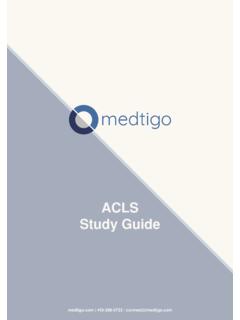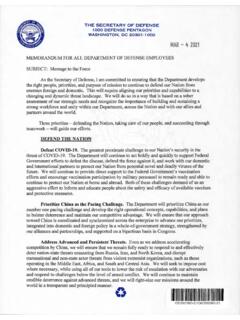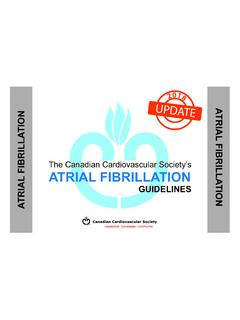Transcription of Reference Guide - California Physical Fitness Test
1 Reference GuidePhysical FitnessTestUpdated January 2020 California Department of EducationCalifornia Physical Fitness Test (PFT) Reference GuideiiJanuary 2020 Table of ContentsSection 1 1 Introduction and Overview 1 FITNESSGRAM 2 Performance Standards 3 Administration Information 4 Testing Students with Disabilities 5 Section 2 Fitness Areas and Tests 6 Aerobic Capacity 7 One-Mile Run 920-Meter (20m) PACER 10 PACER Goal Setting Table 11 Females 11 Males 12 Walk Test 12 Body Composition 13 Skinfold Measurements 15 Bioelectric Impedance Analyzer 16 Body Mass Index 17 Muscle Strength, Endurance.
2 And Flexibility 18 Abdominal Strength and Endurance 18 Curl-Up 19 Trunk Extensor Strength and Flexibility 20 Trunk Lift 21 Upper Body Strength and Endurance 22 Push-Up 23 Modified Pull-Up 24 Flexed-Arm Hang 25 Flexibility 26 Back-Saver Sit and Reach 27 Shoulder Stretch 28 Section 1 Introduction and OverviewCalifornia Department of EducationCalifornia Physical Fitness Test (PFT) Reference Guide2 January 2020 This Reference Guide is designed to assist local educational agency (LEA)1 staff in becoming familiar with the California Physical Fitness Test (PFT).
3 The PFT is a comprehensive, health-related battery of Physical Fitness tests for students in California . This Guide includes a detailed description of each Fitness area tested and suggestions for facilitating the administration of each test. Following each description are tables that display the data collection requirements, the performance standards by age and gender, and, if available, the formulas used to generate the note that this Guide is not designed as a replacement for the FITNESSGRAM /ACTIVITYGRAM Test Administration This can be found on the Cooper Institute's website at Education Code (EC) Section 60800 requires all LEAs to administer the PFT annually, February 1 through May 31, to public school students in grades five, seven, and nine.
4 LEAs may request a California State Board of Education (SBE) waiver to administer the PFT outside the designated testing window. Students are required to take the PFT whether or not they are enrolled in a Physical education class or participate in a block The SBE designated the FITNESSGRAM as the PFT for students in California public schools. The FITNESSGRAM is designed to assess the three main categories of Fitness : (1) aerobic capacity; (2) muscular skeletal Fitness ; and (3) body composition. It is composed of the following six key Fitness areas: Aerobic Capacity Body Composition Abdominal Strength and Endurance Trunk Extensor Strength and Flexibility Upper Body Strength and Endurance FlexibilityA level of Fitness in these six areas offers a degree of defense against diseases that are associated with inactivity.
5 The test results can be used by students, teachers, and parents/guardians to monitor overall Fitness and evaluate their LEA's Physical education program. Throughout this manual, LEAs include school districts, county offices of education, and charter schools that are independent for assessment purposes ( , independent charter schools). Throughout this manual, the FITNESSGRAM /ACTIVITYGRAM Test Administration Manual (Revised Updated Fourth Edition) is referred to as the FITNESSGRAM Test Administration Department of Education3 January 2020 California Physical Fitness Test (PFT) Reference GuidePerformance StandardsThe FITNESSGRAM uses health-related standards to evaluate performance.
6 The desired performance standard for each Fitness -area test is the Healthy Fitness Zone (HFZ). This standard represents the level of Fitness associated with good health. Students should strive to achieve a score within the HFZ for each Fitness -area with the 2018 19 PFT administration, the PFT recognizes a third gender choice of nonbinary. While the California Department of Education (CDE) continues to encourage The Cooper Institute to develop standards for our nonbinary students, the PFT performance standards of the FITNESSGRAM are based on female and male biological sexes; therefore, the Status fields on the student scored reports for the students who identify as nonbinary will be blank.
7 LEAs may assist students in assessing their PFT performance by comparing their scores to current Healthy Fitness Zone charts available at Although the FITNESSGRAM Scientific Advisory Board s position statement titled Gender Uses in FITNESSGRAM , maintains that the use of a child s sex at birth is still the preferred method to obtain the most accurate FITNESSGRAM results, California law provides transgender students equal access to activities and facilities on the basis of their gender identity. The CDE recommends administering the PFT in accordance with the student's identified gender and use the performance standards associated with the identified gender.
8 The following is an excerpt from the aforementioned position statement:Emphasis on assessments should be placed on self-monitoring and tracking improvement over time. However, if standards are to be applied to transgender, gender-neutral (non-binary), or students identifying differently than their sex at birth, FITNESSGRAM results would be most accurate using the child s sex at birth. This is because of the differential effects and timing of maturation and not due to other social and cultural differences between males and females. That being said, it is also up to the parents, students, and teachers to determine what is in the best interest of a student s wellbeing.
9 If using the sex at birth would cause undue emotional stress upon the student, then it is up to the teacher and/or parent/guardian to determine which gender identity is the most appropriate. Teachers should maintain complete confidentiality and sensitivity when implementing and recording results for all students regardless of gender identity. In addition, the CDE recommends that LEAs Reference local policies or legal counsel at the local level as it relates to the performance standards. As part of PFT administration, LEAs are required to collect student-level demographic data and submit that data to the CDE PFT Office does not change any student-level data received from LEAs nor must PFT data match student enrollment Department of EducationCalifornia Physical Fitness Test (PFT) Reference Guide4 January 2020 The FITNESSGRAM performance standards are updated on a regular basis.
10 The current-year standards should always be used and are included in tables throughout this Reference Guide . They are posted in stand-alone versions on the CDE PFT FITNESSGRAM : Healthy Fitness Zone Charts web page at student s performance is classified by the HFZ or other zones, depending on the Fitness area, as follows:Aerobic capacity Healthy Fitness Zone Needs Improvement Needs Improvement Health RiskBody composition Very Lean Healthy Fitness Zone Needs Improvement Needs Improvement Health RiskMuscle strength, endurance, and flexibility Healthy Fitness Zone Needs ImprovementThe "Needs Improvement," or "NI," designation signifies a Fitness area in which a student s score is not in the HFZ.







